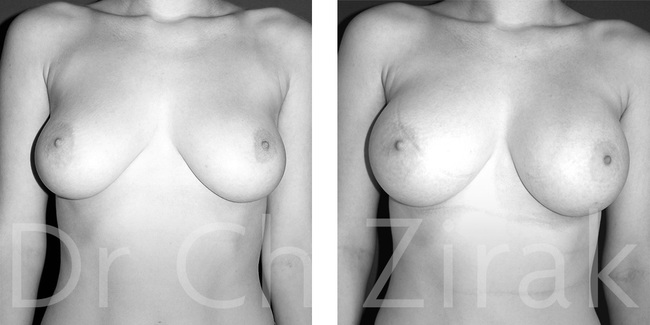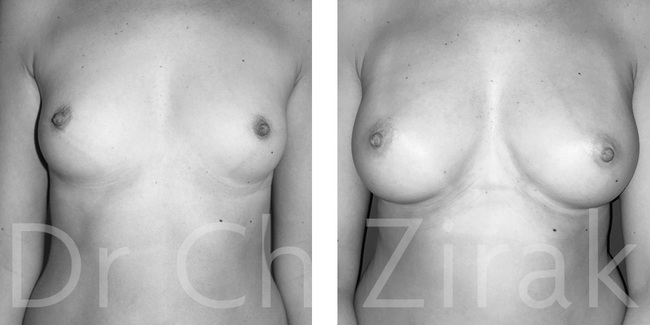Lipofilling and Breast Lipofilling
For several years now, fat is no longer discarded but instead reused as a filler or volumizing product. Indeed, fat injection allows for the filling of wrinkles and folds, compensating for the loss of fat and bone volume that occurs with facial aging, and increasing the volume of breasts and buttocks using the patient's own tissues.
Moreover, Dr. Zirak has developed a technique for reducing vaginal size through lipofilling, significantly enhancing sensations during sexual activity. Regarding breasts, the goal is to achieve volume augmentation without the use of implants. Note that for any patient over the age of 35, Dr. Zirak requires a mammogram before the operation.
The fat is harvested using a special aspiration technique. It is then either rinsed or centrifuged before being reinjected.
This technique poses no oncological risks if performed according to best practices. On the face, postoperative swelling (edema) is often present for four to five days.
TECHNIQUE
Fat is preferably harvested from the inner thighs or lower abdomen, but it can be taken from anywhere on the body. It is processed (rinsed or centrifuged) to be reinjected into the targeted area using fine cannulas.
This procedure of fat harvesting and reinjection (lipofilling) is performed in a day hospital (One Day Clinic) under sedation or disconnection and lasts between one and three hours depending on the volume to be injected.
POSTOPERATIVE CARE
The injected areas are almost painless, whereas the areas where fat was harvested are often painful and show bruising.
The pain disappears within a few days, and the bruises fade within two to three weeks.
After six weeks, the results are evaluated. If the outcome is insufficient, the patient may opt for additional injection sessions.
The sutures from the 4 to 5 mm scars are removed after one week.
Massages and lymphatic drainage will be prescribed by Dr. Zirak.
RESULTS
The results are immediately visible, but their stability over time is achieved between 1.5 and 3 months after the injection. A small proportion of the injected fat does not hold. However, the majority that does hold remains permanent, provided a stable weight is maintained thereafter.
At the end of the treatment, the result is completely natural and long-lasting.


